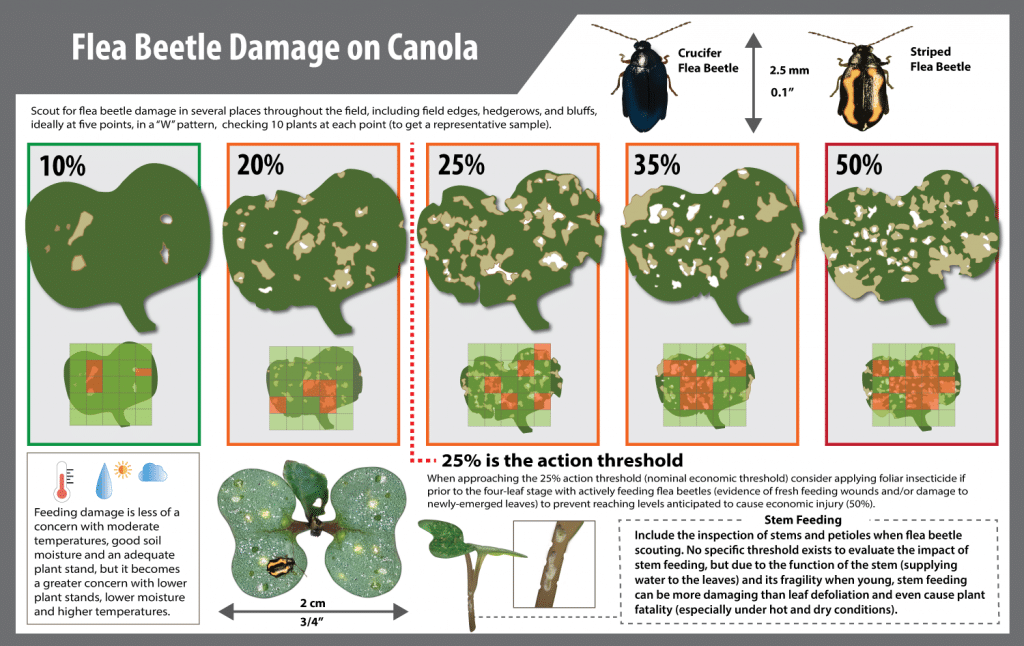Step back before making post-frost management decisions
“Winter: May edition” reared its head this past week with below-zero Celsius temperatures throughout many regions of the Prairies. As a result, emerging canola may be stressed, slowed in growth or damaged by frost, leading some producers to consider re-seeding field(s). However, CCC agronomy specialists suggest not jumping to conclusions; give it a few days, check for frost damage and then make a decision. Check out Spring frost: Did the crop survive? for post-frost management tips.
Get more bang for your buck when scouting for establishment
Canola is emerging in many regions right now and that means it may be time for scouting plant establishment. Assessing canola stands will help growers identify strengths and challenges in the seeding system and make improvements for future years. More information on evaluating the stand can be found here. Recent research posted on plant stands is here. Final spring plant counts should be taken at or past the two-to-four leaf stage and recorded at CanolaCounts.ca. Keep in mind that you can get more bang for your scouting buck by including weeds and insects such as cutworms into your establishment scouting program.

More tools in the flea beetle battle
With flea beetles continuing to cause concern throughout western Canada, one could argue that you can never have too many flea beetle-fighting tips. This podcast offers information on a range of flea beetle behaviours including how far they travel to find canola, major differences between striped and crucifer species, and how long the risk to flea beetle feeding and damage can last. The graphic above shows flea beetle damage ranging from 10 to 50 per cent — a handy tool while scouting. Check out this recent research on thresholds and weather effects on striped and crucifer flea beetles.
When spraying gets tough, the tough learn their stuff
Depending on crop growth stage, you may already be preparing for your first in-crop herbicide application. Of course, perfect scenarios for spraying are rare; canola growers across the Prairies have already faced dry conditions, high winds and frost this growing season. Spraying tips for tough conditions presents some advice on how to manage spraying in (or in the case of frost, after) these and other spray-unfriendly circumstances. Regardless of conditions, be sure to clean and prepare your sprayer before heading out to the field and ensure your tank mix partners get along (scroll to chart). And whatever you do, when it comes to rates, follow the label.
